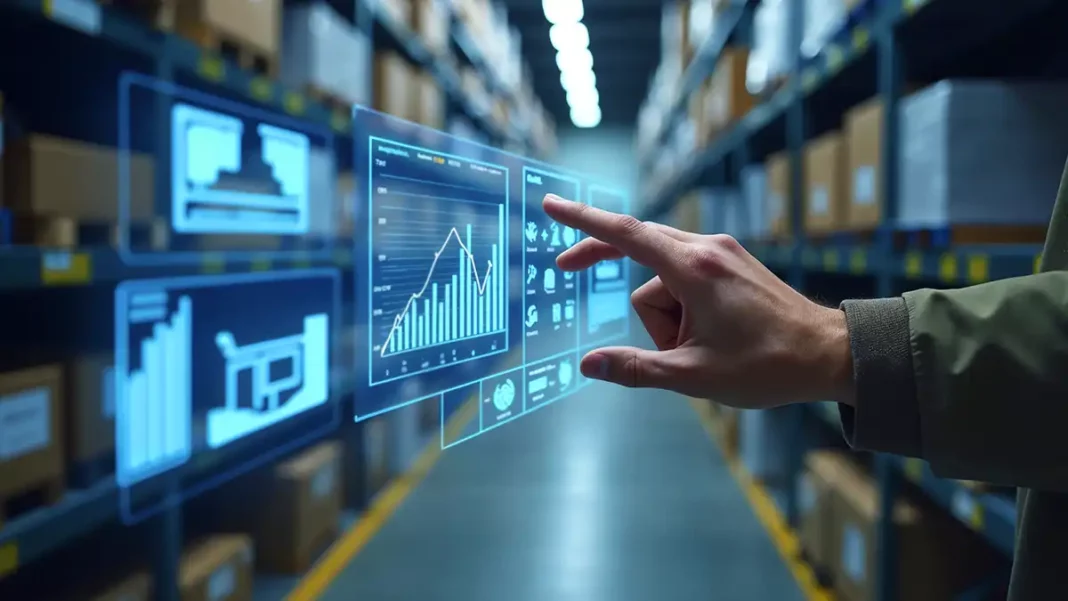Logistics has come a long way from clipboards and spreadsheets, but for many businesses, the systems running behind the scenes are still stuck in the past.
If you’re dealing with delays, missing data, or frustrated customers, you’re not alone. And it’s not always about working harder; often, it’s about working smarter with the right tech in place.
Digital transformation in logistics isn’t just a buzzword. It’s the foundation for getting things moving faster, smoother, and more efficiently. But the real question is—where do you actually start?
1. Choose a solid transportation management system
This is your base layer. Your digital control tower. A good transportation management system (TMS) does more than just organise routes; it gives you full visibility from start to finish. Think live tracking, route optimisation, carrier selection, and freight auditing all in one spot.
If your team is still relying on emails, calls, or standalone spreadsheets to manage transport, you’re already losing time and money.
Here’s what to look for in a strong TMS:
- Real-time tracking – Know where your shipments are at all times
- Carrier integration – Make it easy to compare rates and transit times
- Scalability – It should grow with your business
- Automation features – Reduce the manual back-and-forth
- Custom reporting – So you can make data-driven decisions
This step alone can shave days off your delivery cycle and save you from countless headaches.
2. Integrate your systems (don’t let them work in silos)
A common mistake? Teams using 3 or 4 different systems that don’t talk to each other. When your warehouse management system (WMS), inventory, transport, and customer systems all run separately, you’re stuck stitching together information manually. That leads to delays, miscommunication, and gaps in your data.
Make sure your digital tools are connected. That might mean APIs, cloud-based platforms, or simply choosing systems designed to work together. The goal is to have a single source of truth, not a dozen places to check for one shipment update.
3. Use real-time data for smarter decision-making
Lagging data slows everything down. If you’re reviewing performance after the fact, you’re reacting too late. Real-time data helps you see what’s happening now, not what happened last week.
That means being able to adjust routes when there’s traffic or weather delays, catch bottlenecks before they become major issues, and spot which carriers or lanes are underperforming.
Data on its own isn’t useful—it’s what you do with it. Make sure your tools give you the ability to act, not just observe.
4. Digitise paperwork (and stop printing everything)
Shipping docs, customs declarations, invoices… paper still clogs up a lot of logistics operations. Digitising these processes doesn’t just cut down on admin time; it makes your records searchable, accessible, and far easier to manage. No more chasing a misplaced form or waiting on someone to scan and send.
You’ll also reduce human error. Digital forms and automatic validation help catch mistakes early, instead of after a delivery’s gone wrong.
5. Invest in visibility across the entire supply chain
Customers expect to know exactly where their order is and when it’ll arrive. That means visibility is no longer a “nice-to-have.” It’s standard.
From supplier to warehouse to doorstep, your system should offer updates at every stage. Internal teams need the same visibility too—procurement, operations, and customer service should all be looking at the same data.
That kind of transparency builds trust. Not just with customers, but with partners too.
And it’s not just about tracking. It’s about being able to spot issues early and take action before they snowball.
6. Train your team on the tech you bring in
New tools are useless if no one knows how to use them. Digital transformation isn’t only about buying software. It’s also about building a team that can work with it confidently.
Make training part of the rollout, not an afterthought. That means:
- Hands-on sessions, not just slide decks
- Ongoing support, especially in the first few months
- Clear process updates so everyone knows what’s changed
The smoother the transition, the faster you’ll see the benefits.
7. Start small, but start smart
You don’t have to flip your entire logistics operation overnight. That’s usually a recipe for chaos.
Start with one area that’s clearly causing pain—maybe it’s dispatch delays, customer complaints, or lost inventory. Then fix that with the right digital solution.
Once you see the impact, momentum builds. You’ll know what works, what doesn’t, and how to scale your transformation across the business.
Digital transformation is a process, not a one-time project.
What comes next?
If logistics is the engine of your operation, then digital tools are the oil that keeps it running smoothly. They reduce friction, speed things up, and help you stay competitive.
But none of it works without a clear starting point.
Focus first on a smart, connected transportation system. Then build out from there—link your tools, empower your team, and make data your daily driver.
Digital transformation in logistics doesn’t need to be overwhelming. Just strategic. And it starts with that first smart step.
Josie Patra is a veteran writer with 21 years of experience. She comes with multiple degrees in literature, computer applications, multimedia design, and management. She delves into a plethora of niches and offers expert guidance on finances, stock market, budgeting, marketing strategies, and such other domains. Josie has also authored books on management, productivity, and digital marketing strategies.


